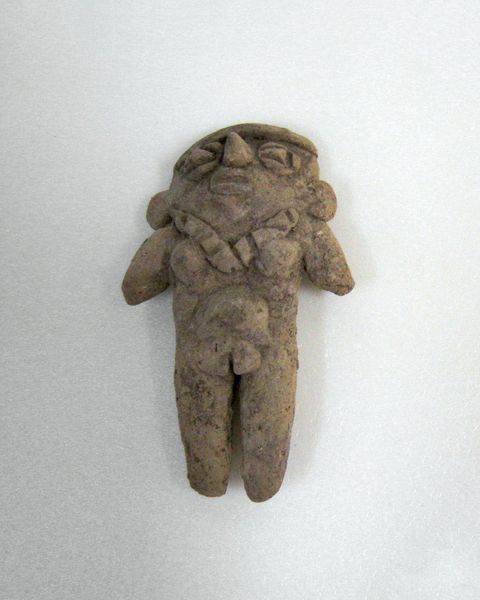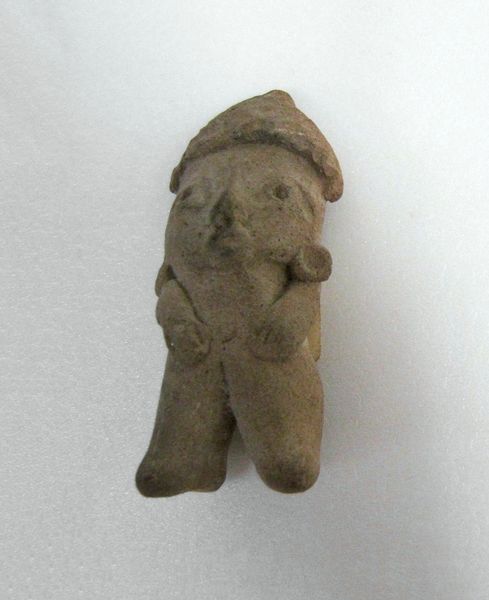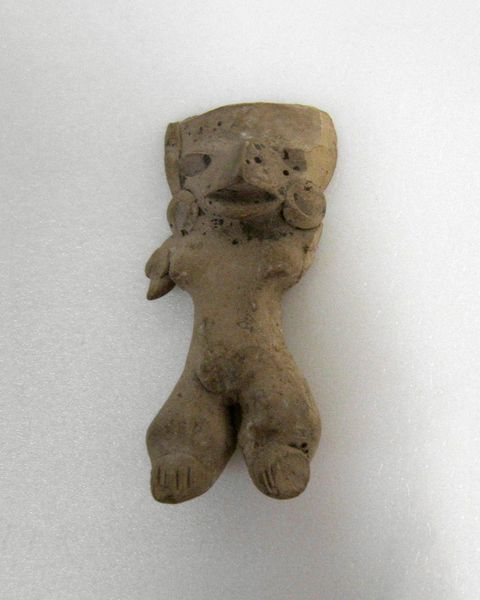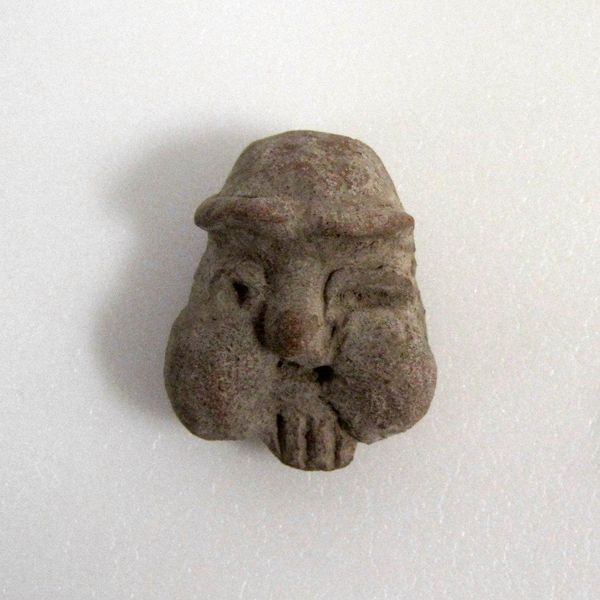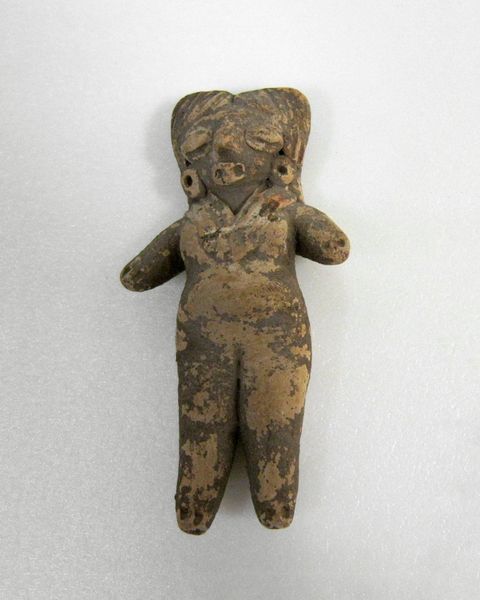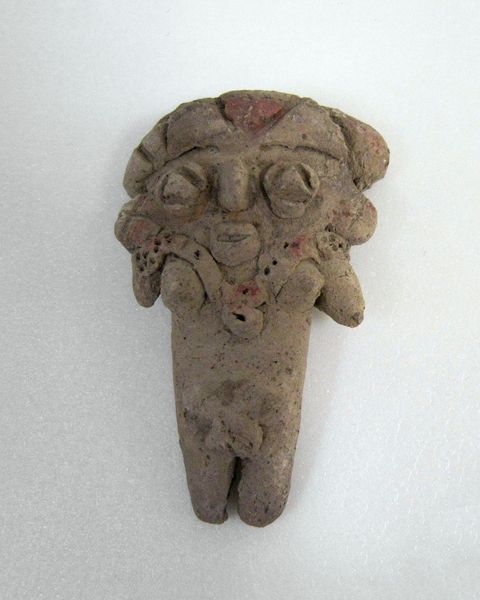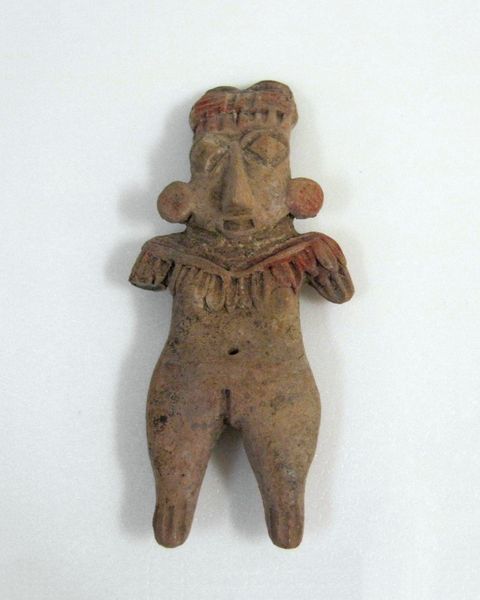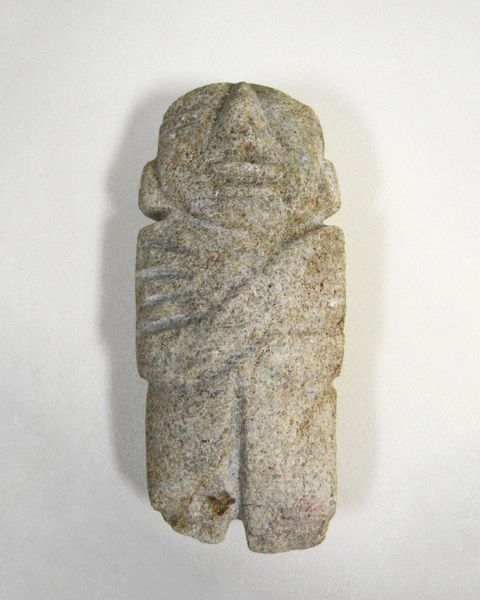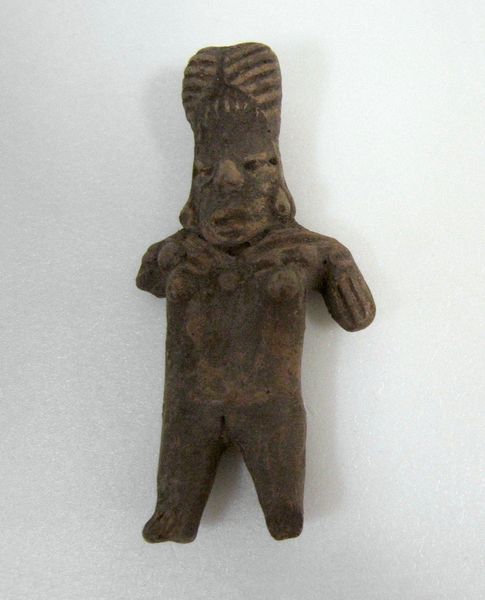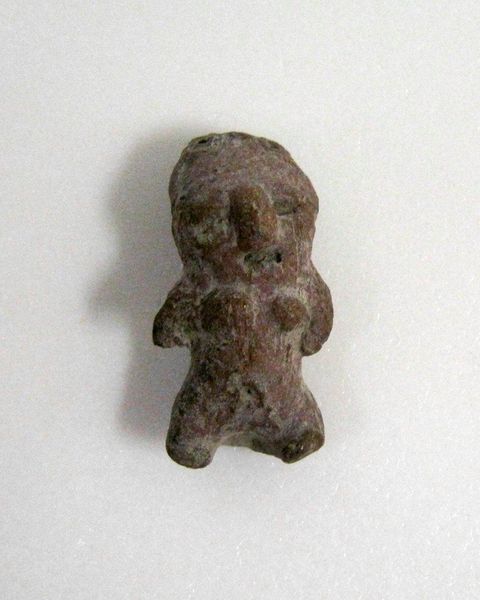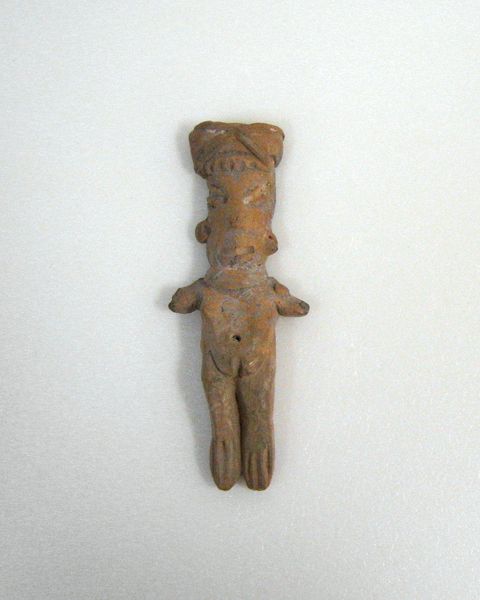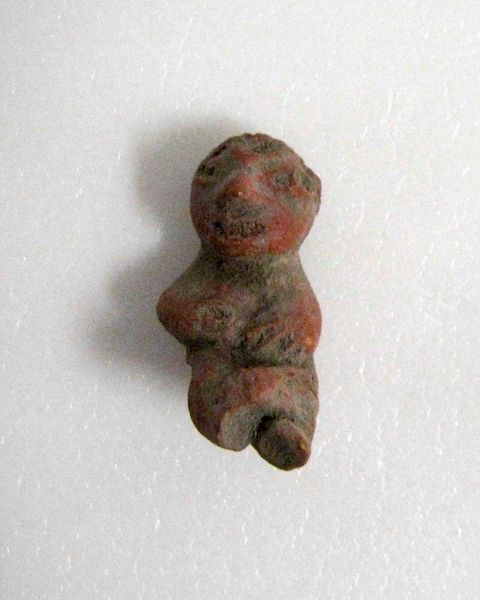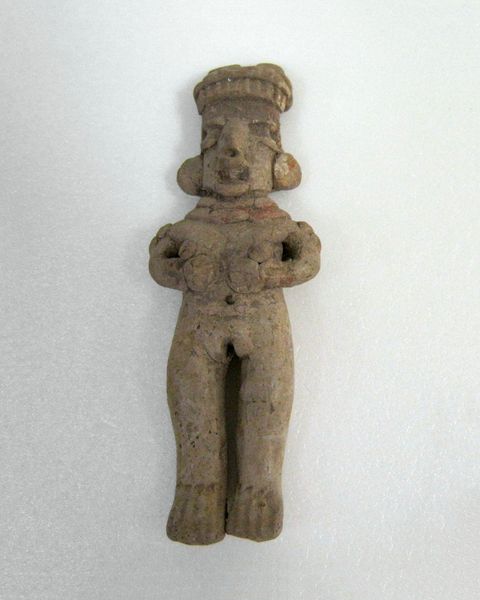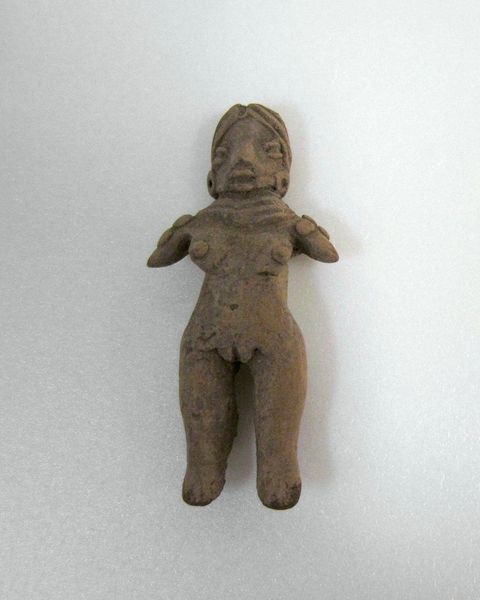
ceramic, earthenware, sculpture
#
sculpture
#
ceramic
#
figuration
#
earthenware
#
sculpture
#
miniature
#
indigenous-americas
Copyright: Public Domain
Editor: This diminutive earthenware figurine, crafted by a Tlatilco artist around 1500, really strikes me with its otherworldly air. I mean, what exactly am I looking at? How do you interpret this work? Curator: I see this as a potent example of embodied symbolism, deeply entwined with Mesoamerican perspectives on identity. The pronounced features – almost animalistic – suggest a bridging of worlds, human and other-than-human, perhaps reflecting shamanic beliefs or ancestor veneration. Editor: I hadn't considered shamanic beliefs. So you see the exaggerated features as more than just stylistic choices? Curator: Precisely. Consider the indigenous relationship with the land, with nature's cycles, the cosmos... the artists often blur boundaries as a form of cultural resistance. It reclaims the body as a site of power, moving against colonial impositions and cultural erasure. Do you see how its diminutive scale might amplify its significance, rendering it more precious, more easily hidden? Editor: That makes me think of its role within a larger system. So this might be one piece of many? Curator: Absolutely! We have to ask: what rituals did it participate in? Who was it meant for, and what socio-political role did that person or community hold? Editor: It's interesting to consider this object not just for its aesthetics but for its activist potential, how it subverts expectations of Indigenous identity. Curator: Right, understanding it is critical. Approaching it with cultural sensitivity requires awareness of the forces it stands against and empowers. Editor: I will never look at another Mesoamerican figure the same way. Thanks for highlighting this resistance. Curator: Likewise. Considering all voices enriches art.
Comments
No comments
Be the first to comment and join the conversation on the ultimate creative platform.
